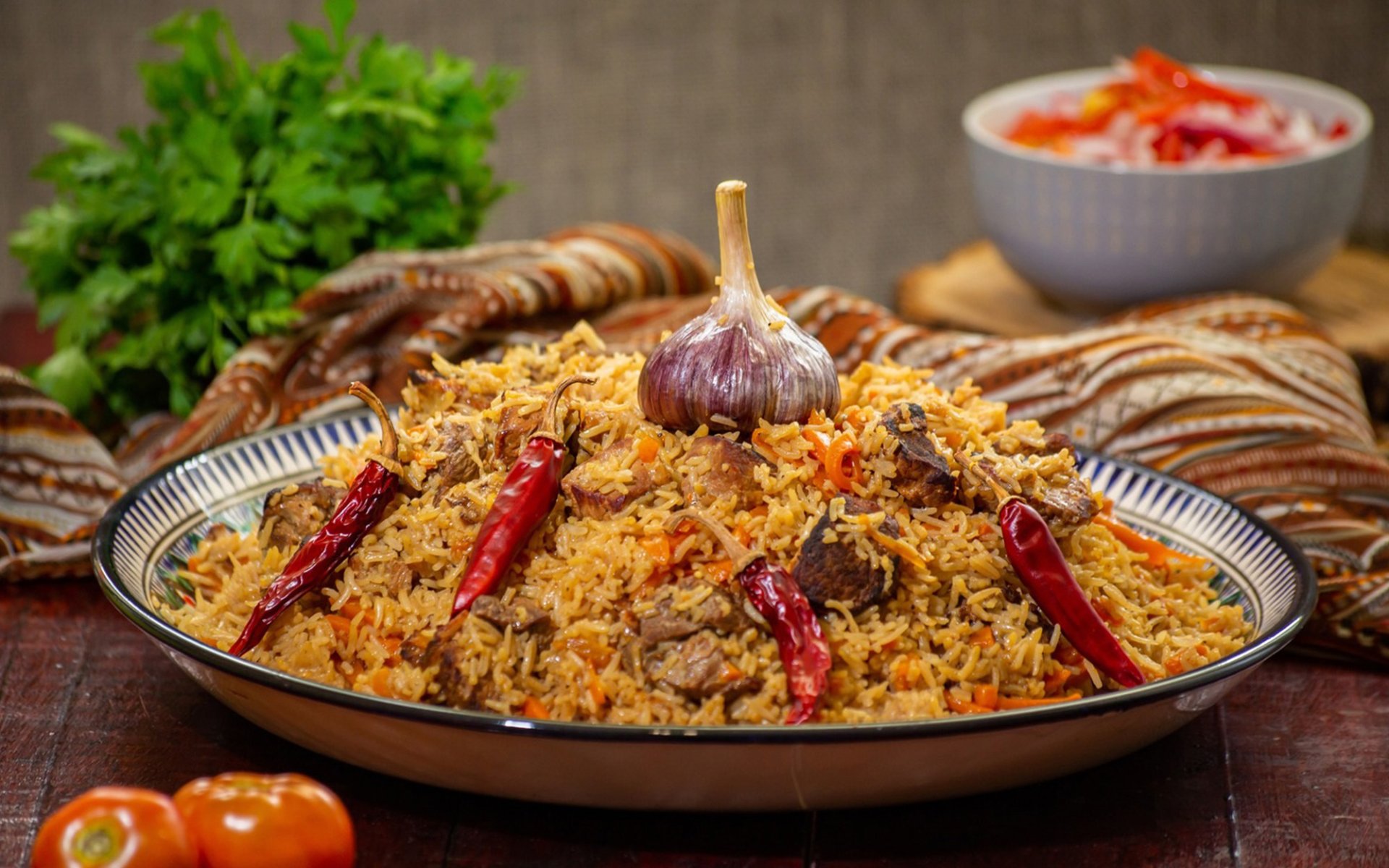Pilaf

Pilaf, also known as Pilau, Pilaw, or Pulao, is a timeless favorite that has endured for centuries. With its diversity, versatility, and cultural significance, this ancient dish has become a symbol of culinary creativity that continues to thrive today, remaining popular worldwide as a food that connects people.
Origins in Ancient Civilizations: Mesopotamia and Persia
The origins of pilaf trace back thousands of years to ancient civilizations, including Mesopotamia (present-day Iraq) and Ancient Persia (present-day Iran). In the past, the method of preparing pilaf was relatively simple: cooking rice together with meat and vegetables in a single pot, creating a delicious meal that provided both energy and complete nutrition, suitable for feeding people of that era.
In Ancient Persia, pilaf gained particular prominence as a main course. Persian chefs elevated pilaf into an art form, not limiting it to basic ingredients. They used aromatic spices such as saffron, cardamom, and cinnamon, dried fruits like raisins, and nuts to create diverse and complex flavor profiles. This Persian version of pilaf was known as Pilāf or Pilāv.
Historically, pilaf was not merely a delicious dish; it was also a symbol of hospitality and sophistication. It was typically served to important guests at royal banquets and special occasions. Thus, in its early days, this dish was reserved for the elite, signifying the status and honor of those who partook in it.
Dissemination via the Silk Road: A Tapestry of Cultural Flavors
The influence of Ancient Persians on pilaf was profound, leading to its rapid spread to neighboring regions, including Central Asia, the Middle East, and India, via the Silk Road. This ancient trade route connected the East and West. During their journeys, merchants and explorers not only transported goods but also carried culinary traditions and recipes with them. Pilaf thus became a staple dish along the Silk Road, evolving as it passed through different cultures, resulting in fascinating regional variations.
Central Asia: Particularly in Uzbekistan and Tajikistan, pilaf became a symbol of hospitality and celebration, often prepared in large quantities for communal feasts, weddings, and various ceremonies. Central Asian pilaf recipes differ from the original, typically featuring large pieces of lamb or beef, rice, yellow carrots, and local spices. It is known as Plov or Osh, serving as a national dish and a cornerstone of the region's culinary culture.
India: Pilaf gained immense popularity during the Mughal Empire, which introduced Persian culinary culture. The Indian version of pilaf manifests as aromatic and richly flavored spiced rice dishes that blend ancient Persian pilaf traditions with unique Indian spices, resulting in the globally renowned Biryani. Furthermore, each region of India has developed its own unique variations of pilaf, such as the spicy and distinctive Hyderabadi Biryani and the subtly aromatic Lucknowi Biryani, known for its dum pukht cooking method.
Pilaf in Europe and Modern Times: Limitless Versatility
During the Middle Ages, pilaf became more widely known in Europe, gaining popularity in Spain and Mediterranean countries, where it was referred to as Pilaf or Pilau. In these regions, pilaf was further elevated by the addition of saffron, a precious spice that imparts both a beautiful golden-yellow color and a captivating aroma, making the rice visually striking and even more fragrant and appetizing.
In modern times, pilaf continues to evolve and adapt to global tastes, becoming a versatile dish that caters to a diverse range of dietary needs. This includes seafood versions with shrimp, fish, or shellfish, as well as vegetarian and vegan options that substitute meat with ingredients like tofu, legumes, and various vegetables, ensuring that everyone can access and enjoy it. There are even versions for health-conscious individuals who can opt for pilaf made with brown rice or other grains, a highly popular choice today.
From ancient times to the present, pilaf has developed into various forms, each telling its own unique story of culture, tradition, and culinary innovation. Today, pilaf remains a popular dish served at gatherings, weddings, and celebrations worldwide, symbolizing sharing, happiness, and a rich culinary heritage that truly connects people from diverse corners of the globe.


